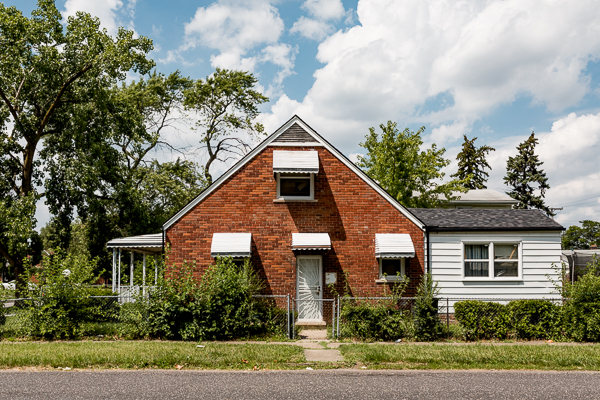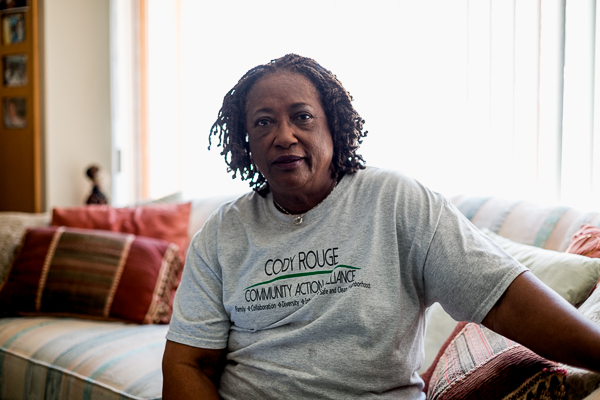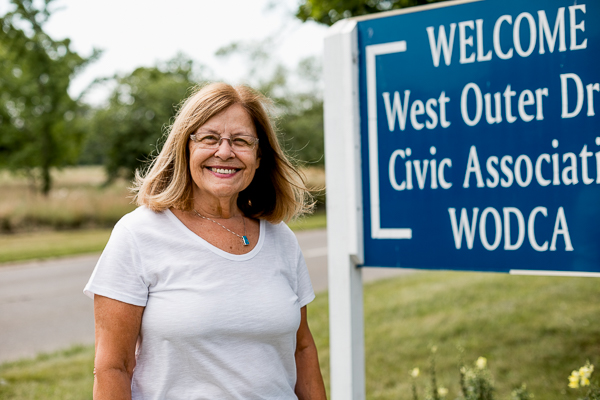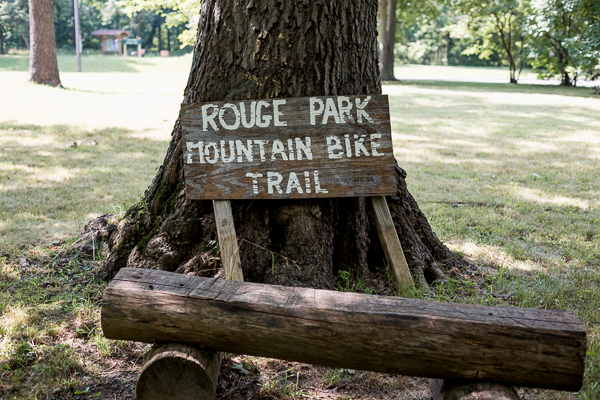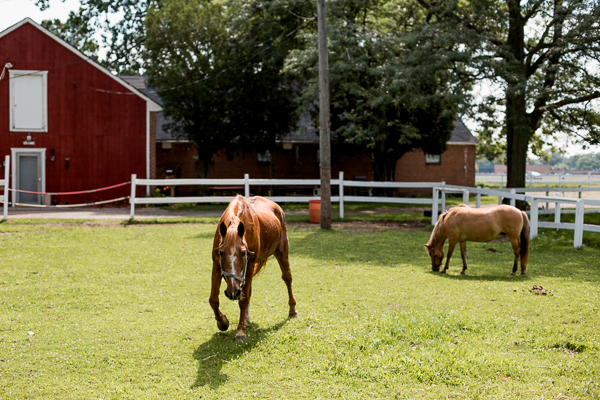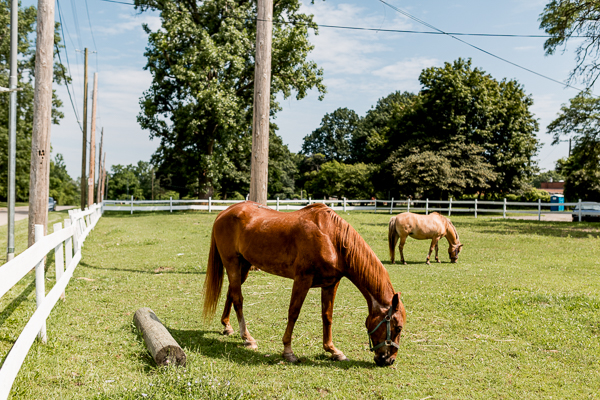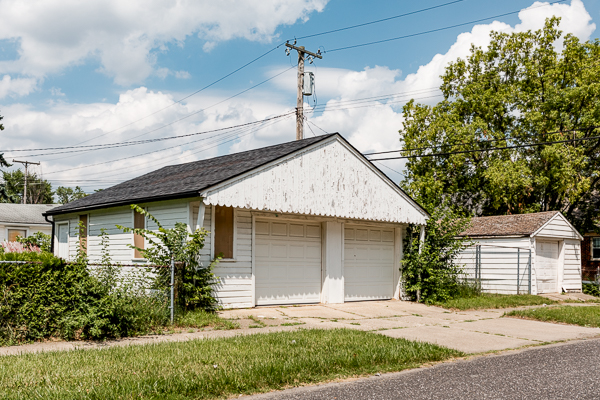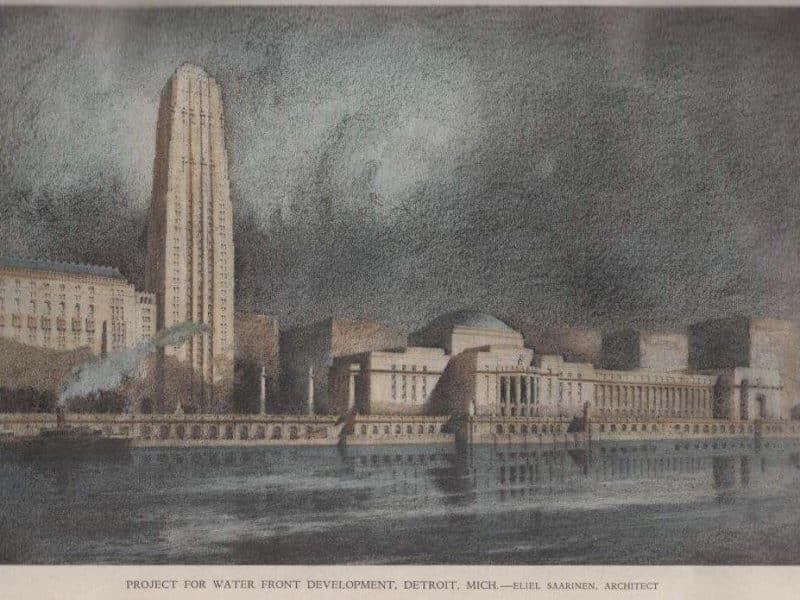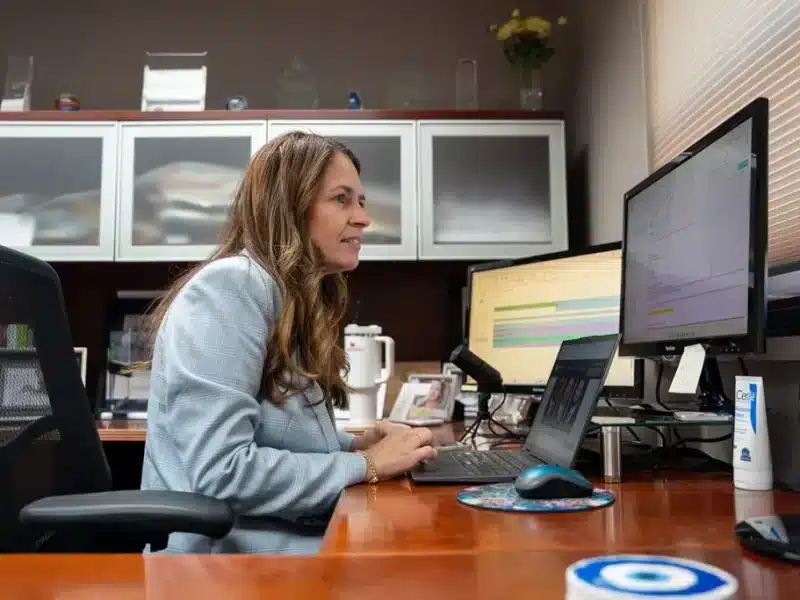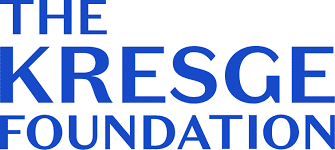A bottom-up approach: Cody Rouge residents develop big plans for their neighborhood
Cody Rouge on Detroit's west side has suffered from blight and depopulation in the last decade plus. But residents, along with several powerful foundations and corporate partners, have developed an ambitious plan to bring the neighborhood back.
Chris Bond is deeply invested in Cody Rouge. She and her husband have lived near Joy and West Chicago since 1979, raised a child, and remain active members in the neighborhood.
“We chose this area because of the vibrant neighborhood at the time we moved here,” says Bond. “Back then we had a lot chains in the area: Sears Surplus, Kmart, Farmer Jack, and the fruit market. The library was open to us at that time, and we didn’t have to leave for really anything except to go to work and come back home.”
Bond, a former Head Start teacher, says the area began to change in the late ’90s; crime became more common, blight started creeping in, and families began moving out. The situation has snowballed in recent years. For decades, Cody Rouge was known as a place where police and firefighters lived with their families. But that changed in 1999 when the state legislature banned city residency requirements for municipal employees.
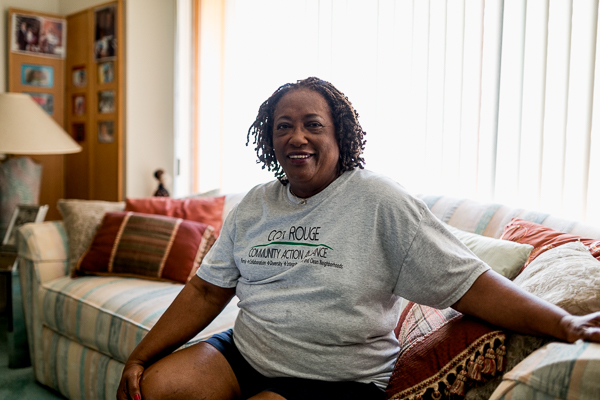
Cody Rouge had another major hit during the foreclosure crisis and has suffered from numerous school closings. Despite having an estimated population of 36,000 and the second highest number of young of people between the ages of zero and 18 in the city, the neighborhood is grappling with issues like blight and depopulation.
Despite these bumps in the road, however, the way forward now looks a little clearer thanks to an innovative new partnership between local community groups, Michigan-based corporations, and an area foundation. Known informally as the Cody Rouge community plan, the initiative seeks to transform the neighborhood through a combination of coordinated action and investment. Among other things, it’s aimed at increasing employment, fighting blight, strengthening commercial corridors and providing opportunities to local youth.
The Skillman Foundation, DTE Energy, General Motors, and Quicken Loans have been partnering with local community groups to make the project a reality. Although an exact dollar amount has not been disclosed, these major stakeholders will be investing millions into the neighborhood. They’re also providing training and internships for young people, volunteer support and, in the case of Quicken’s sister company Rocket Fiber, high-speed internet for local residents.
What’s truly exceptional, though, is that local residents have taken the lead in developing the project’s strategic framework.
“We were able to establish a community planning process over an eight-month period in which residents determined what the needs of the community were and what our priorities are,” says Kenyetta Campbell, executive director of the Cody Rouge Community Action Alliance (CRCAA), the local group that’s been spearheading the effort. “The foundation as well as the corporations are looking to support what we’ve established in our community plan.”
Community plan origins
Cody Rouge residents have been banding together for years to tackle these sorts of issues. The area, which is divided up into eight subcommittees, has long been home to various block clubs, neighborhood associations, and community organizations. In 2009, CRCAA came together as a nonprofit to help improve the quality of life in the neighborhood, and which subsequently drew nonprofit and foundation support to the area.
All this laid the groundwork for the community plan, which began about a year and a half ago.
Many of the CEOs involved with the project were on the board of the Skillman Foundation. Together they pondered what kind of impact they could make in the city if they coordinated their efforts. After researching through consultants how different communities around the country were dealing with similar issues in Detroit, they chose Cody Rouge as their focus area.
“I think the Cody Rouge community was selected not just because it was a [Skillman Foundation] Good Neighborhood, but because … youth and residents have been working collectively for 10 years to organize and build from the bottom up,” Campbell says. “It’s an organized community, and people can kind of feel it when you come to the neighborhood.”
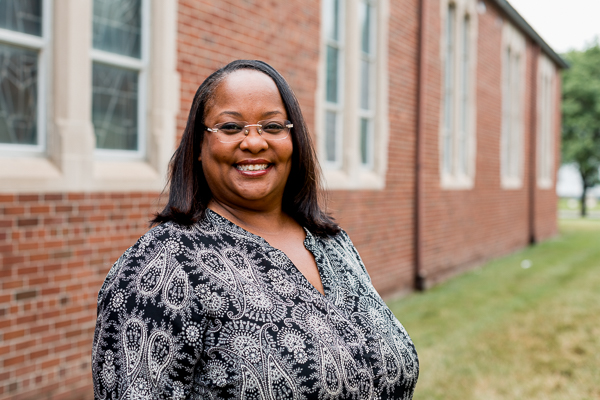
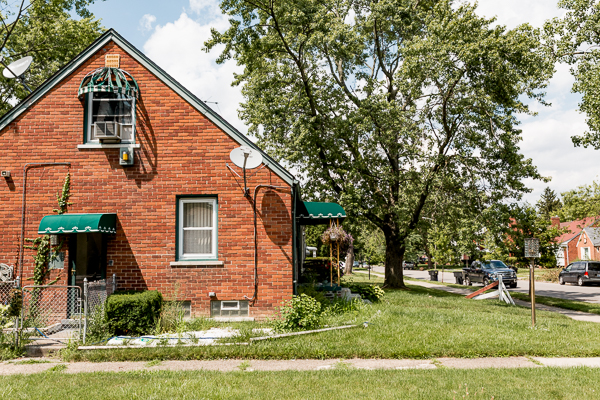
In an effort to make this “bottom-up” plan a reality, CRCAA joined forces with the Community Development Advocates of Detroit (CDAD), a group that specializes in assisting local nonprofits doing community development. They then formed a steering committee of citizens, stakeholders, and strategic partners like Joy-Southfield CDC, Black Family Development, Detroit Impact Don Bosco Hall, and the Cody Rouge Faith Alliance to get the ball rolling.
The community engagement and data collection process included three community-wide meetings, more than 400 surveys, focus groups (including Arab and Hispanic-oriented groups), interviews with key information providers, visits to local block club meetings, and a weeklong “data walk” that let residents review recommendations based on their participation.
The final strategic framework focused on seven key points, such as stabilizing neighborhoods through foreclosure prevention and anti-blight measures, strengthening local commercial corridors, connecting youth with jobs and other services, and more.
The document also included neighborhood specific plans tailored to different areas of Cody Rouge.
Positive signs
So what do residents think of the framework?
Bond, who attended several meetings, found both the process and the plan itself quite inspiring.
“I think they did an awesome job getting input from the neighbors, because otherwise they wouldn’t have known what our needs and our wants are,” she says. “I think it’s a great plan. Now we just have to see some other implementations of it, and that’s not going to happen overnight.”
Bond says the organizing around the plan has already achieved some solid results, including the boarding up of empty houses and debris being cleared from a vacant gas station. Bond’s also excited about an upcoming GM-sponsored community service event that will help elders in the community pick up their properties.
Paula Trilety, president of the West Outer Drive Civic Association, is also pleased with how the plan turned out. A former Detroit Public Schools teacher, she lives in the vicinity of West Chicago and West Parkway and has been involved with community activism for many years.
“I think the plan has generated a lot of support and a lot of interest,” she says. “We were fortunate to have CDAD work with us because of their track record assisting other communities.”

Although certain priorities of the plan—like blighted buildings—aren’t as big a concern in her area, Trilety recognizes many of the issues affecting the neighborhood as a whole will take a concerted effort to resolve. As for specific neighborhood goals, her association has already achieved several, including attracting new businesses and clearing trash from properties. In fact, her group now plans on picking some new goals in the coming months.
What’s more, she feels the plan has inspired more residents to get involved and encouraged the city to be more responsive to citizen requests. And all of this activity has her feeling very optimistic about the future of Cody Rouge.
“There’s lots of things going on,” Trilety says. “You go in any neighborhood, you can see changes, people making a difference, organizations reaching out to help the community. I’m hopeful.”
This article is part of “Detroit Innovation,” a series highlighting community-led projects that are improving the vitality of neighborhoods in Detroit, while recognizing the potential of residents to work with partners to solve the most pressing challenges facing their communities.
The series is supported by the New Economy Initiative, a project of the Community Foundation for Southeast Michigan that’s working to create an inclusive, innovative regional culture.
All photos by Nick Hagen.

